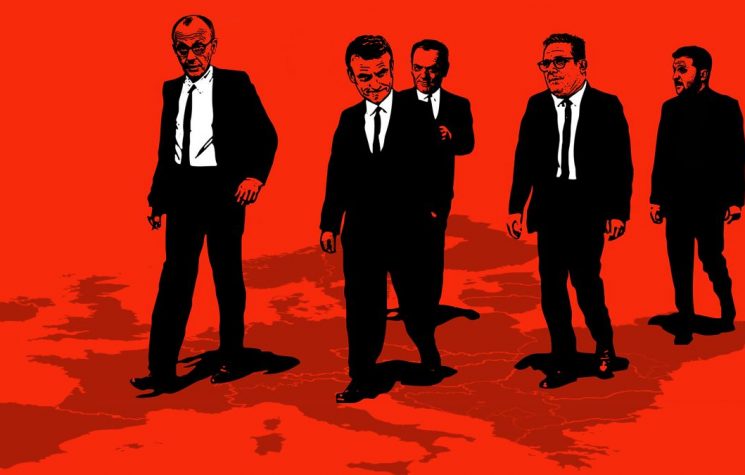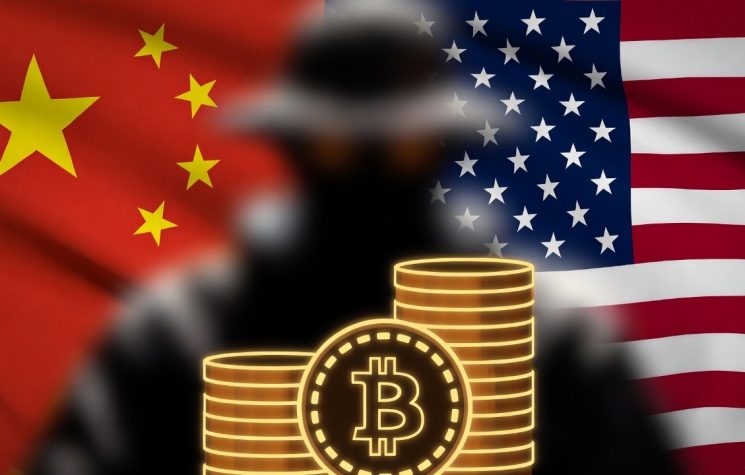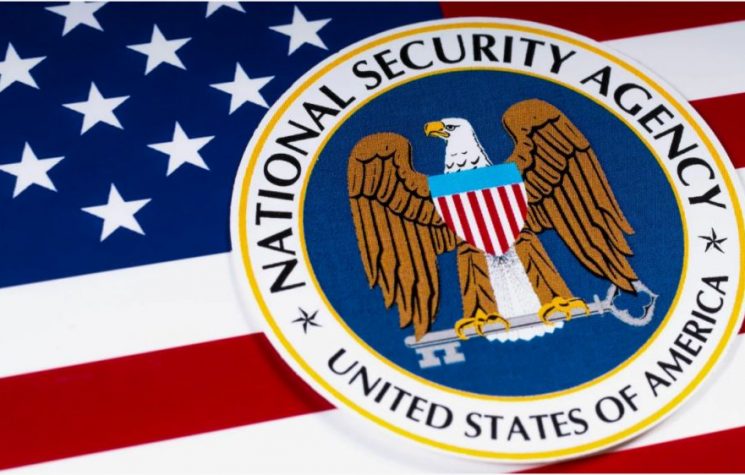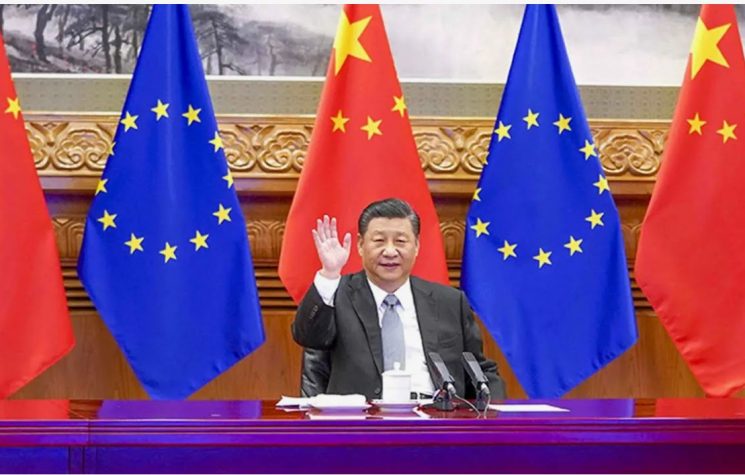With Signalgate, we saw that Trump’s people intends to take on the Deep State possessing the knowledge of a rebellious teenager who reads Wired magazine.
Contact us: info@strategic-culture.su
Years ago, Russian-American Yasha Levine released the book Surveillance Valley: The Secret Military History of The Internet (Icon, 2018). The word “secret” is important, because anyone who knows a little about the history of the internet can talk about the importance of Alan Turing’s work (one of the fathers of the computer) for World War II. The secret military history is that of the mass surveillance project conceived during the creation of ARPANET. ARPANET, in turn, is the state project that actually created the internet. The internet was born as state-owned, and was privatized during the Reagan administration.
I have already reviewed for SCF a book by Benjamin Breen that tells the history of the U.S. intelligence service’s fascination with lysergic drugs. During World War II, its obsession was to find a way to capture an enemy soldier, brainwash him and turn him into an undercover agent. The immediate result of this was Margaret Mead and a bunch of anthropologists researching hallucinogenic substances used by Indians in trance, since the original intention was to discover a drug capable of inducing an unknown mental state. Thus, World War II encouraged a lot of research in cultural anthropology, the development of synthetic drugs and hypnosis. None of this stopped with the end of World War II. The best-known consequence of this fascination was the infamous MKUltra, in which CIA agents gave LSD to ordinary citizens without their knowledge, to observe the effects. However, the madness was so great that NASA even funded a scientist (John C. Lilly) who gave LSD to dolphins in order to teach them English, training to teach English to ETs when they appeared. U.S. intelligence does not excel in common sense, nor is it modest.
In any case, cultural anthropology has proven to be a key element for the CIA to navigate very different cultures. In Yasha Levine’s book, we learn that during the Vietnam War, which began in 1955, the CIA invested in social science and soon moved on to social engineering. In between one thing and another, the CIA began to profile the Vietnamese, and soon the practice developed in Vietnam began to be used in domestic politics. In both Vietnam and the United States, the intention was to anticipate revolts and dismantle them before they happened.
In addition to all this, Yasha Levine recalls, pointing to the work of Edwin Black, that the technology of the United States census was used by Nazi Germany in partnership with IBM to carry out the Holocaust. Consider this: in a country like Brazil, where the census is done by self-declaration and includes a few categories of color, it would never be possible to determine how many people with Jewish blood there are and where they are. In the United States, the census is done based on individual data linked to the bureaucracy. If Argentines of only Italian descent migrate to the United States and have children there, their descendants will forever be considered Latino by the bureaucracy, because the paperwork will show that their ancestors came from Argentina. IBM’s individualized census made it possible for the government to track down all people with a given ethnic background. In the case of Nazi Germany, it was a matter of screening out people whose Jewish origins were listed in the records. (It’s worth remembering that the emancipation of the Jews in the 19th century included them in the bureaucracy.)
U.S. intelligence then began to further individualize records and, in fact, to profile politically active citizens who had not committed any crime, simply on suspicion of communism. ARPANET, which later became DARPA, was created in 1969 with the aim of taking this database from a large state computer and making it accessible to a network of state computers, with the aim of sharing the information within the intelligence community. The records included political positions, habits, places frequented and even sexual secrets. The project was developed at universities and, from the beginning, it was clear to the students that it was a project dedicated to state surveillance, even if they were not aware of the profiles. Furthermore, in the 1970s, a whistleblower denounced these profiles of civilians that the government was spreading across the computer network with ARPANET. Journalist Ford Rowan investigated the allegations, wrote a shocking article, and Senator John Tunney conducted a parliamentary inquiry committee on ARPANET in 1975.
Two important things were done to combat hostility to the project. The first was marketing: the image of the hacker as a rebel against the system was created and the Internet was sold as a great vehicle for world harmony, for a democratic global village. Just as the gun-toting right believes that anyone with a rifle can obtain freedom without the state, cyberculture preached that, with a computer in hand, man is completely free. The work of Stewart Brand and Wired magazine contributed greatly to this. Apple used and abused this rebellious image (see the 1984 commercial here). The second thing was privatization. Instead of continuing to develop projects to spy on its citizens, the CIA created a company to invest in start-ups that did what it wanted and became its client.
The two measures fed off each other. Rebellion is rebellion against the government. If rebellion is against the government, companies are good, heroic, and resilient. The main philosophy is that of anarcho-capitalist (or “libertarian”) Ayn Rand, who sees the businessman as a Nietzschean superhero who rebels against the state, which is led by inefficient and inferior bureaucrats. Thus, instead of creating parliamentary commissions, laws, and using democracy to impose limits on the excesses of intelligence, we should buy our Apple to feel like legitimate rebels – even if personal computers come with backdoors and flaws that allow the government to access them remotely.
Whistleblower Edward Snowden, a poorly educated libertarian, is presented as a bucket of cold water. After attracting the world’s attention due to the importance of his leaks through Wikileaks, which revealed the promiscuity between Google and the U.S. state, he presented the pure and simple use of Tor as a solution to the problem. Despising state, man would achieve his freedom through Tor, the browser that allows perfect anonymity on the internet.
And then Levine tells the history of Tor: its funding comes from a company created by the CIA to finance projects that interest it. Tor hides the IP address and makes it appear that the person is accessing the internet from another country. In general, it serves the same purposes as a VPN service, and it predates its popularization. (Here in Brazil, the blocking of Twitter by Alexandre de Moraes made VPN services popular. Few people remembered Tor.)
Levine used a law on access to information to obtain documentation related to Tor. There, he understood that spies need secrecy: if a CIA agent in Lebanon accessed his work email, the Lebanese providers would see that there was a CIA agent there. With Tor, the provider doesn’t see what we access – but they see that we are using something that masks the IP address. The problem was: if only CIA agents used this type of thing, then that would be enough for the Lebanese providers to see that something is wrong. As a result, the CIA had to encourage everyone to use Tor – and thus the Internet privacy movement was born. The CIA’s strategy was to attract as many political dissidents around the world as possible and let the criminals use it. It wasn’t easy. Levine saw that Russian dissidents, who didn’t have a firewall like the Chinese, considered that using Tor would associate them with the CIA and that was a risk. As for the criminals, the biggest phenomenon was the Silk Road website, which, run by an anarcho-capitalist, started selling drugs and then went on to sell weapons, organs, murders… All paid for in Bitcoin.
When Snowden revealed Tor, he helped the CIA a lot – so much so that the Russians finally started using it. In the end, the popularization of anarcho-capitalism saved the CIA, at least in the Wikileaks scandal. But what the anarcho-capitalists didn’t know was that Tor, being practically a parastatal, gives the state privileged access to its users. The owner of Silk Road was arrested and sentenced to life in prison. He spent 11 years in prison until he was pardoned by Trump. While he continued his activities, Bitcoin appreciated.
So, Tor is a trap: in addition to guaranteeing anonymity for U.S. spies before entities other than the U.S. government, it also serves to monitor, or at least register, people who have something to hide or are rebellious enough to use Tor.
And do you know what else was done with this aim, ladies and gentlemen? The Signal app, which promises privacy and was used by activists. Like Tor, it was developed with funding from the Open Technology Fund, a non-profit organization linked to the U.S. government that also aims to subsidize the notorious Radio Free Asia (whose purpose was to spread anti-communist propaganda in China via radio waves). One of Signal’s leaders was Jacob Applebaum’s friend. And, if we are to believe Levine, Applebaum was working for the CIA when he managed to infiltrate the Wikileaks leadership.
Like Tor, Signal was a trap, and Levine listened to American activists who were using it and were caught with surprising ease, as if the police had read their conversations.
With Signalgate, we saw that Trump’s people intends to take on the Deep State possessing the knowledge of a rebellious teenager who reads Wired magazine.
PS: While I was writing this text, I saw that Levine had just given an interview to Chris Hedges about this same book. The reader can seed it by clicking here.














































